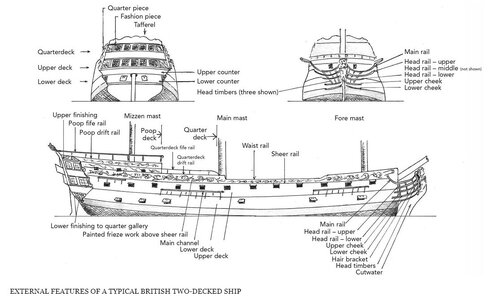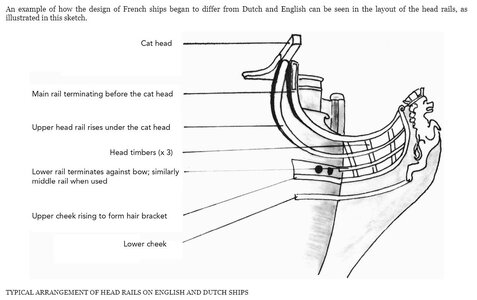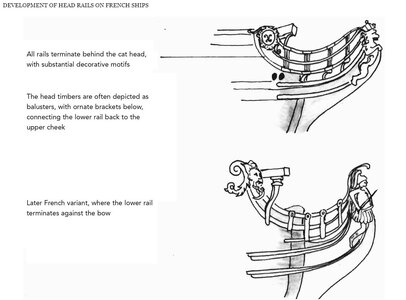- Joined
- Oct 31, 2023
- Messages
- 22
- Points
- 48







Then that answers the question about their purpose. They are straining bars…… When you sit there in the morning doing your poop thing and the sea is rough, your glad that these rails are there and you can hold them to stay in position. Till your morning (or evening) ritual is done.
 .
.
My thoughts exactly. I don't think they would make a warship or an industrial ship with these things on the bow without a purpose. My best guess is that a person handling the rigging of the anchor could climb onto this nest-like array without falling into the ocean, for at night, maybe a rope could lasso around your ankle, but you could be assured that you had a knife handy and something solid to hold onto.Very Interesting, almost like catch nets on modern ships along the flight decks.
 ing was not just for business, but to let a storm go over.
ing was not just for business, but to let a storm go over.The bow of the ship has ornimental stuff attached to the bow and such. I am wondering the purpose of these:View attachment 424236

In response to your question you might be interested in a 1925 book “Old Ship Figureheads and Sterns” by L.G. Carr Laughton who addresses the very subject of the development of ornamentation, including the figurehead and the construction and structure of the “head”.
In the introductory chapters the book discusses how the projection of the forecastle beyond the stem head came about and why it tended to stay as part of sailing ship construction. He considers and supposes that the original projection was a beak (as a weapon) so that early sailing ships could meet oared galleys. This beak or spur was an open framework but moving forward in time this “spur” was decked and a bulwark and additional timbers added. Ornamentation was very much a factor and remained even as the form of the head changed over the years. As time went by more changes were undertaken, so much so that the original horizontal structures, for construction purposes, took an angle of 30 degrees with the waterline. This meant the rails had to be curved. Later more changes saw the shortening of the projection of the head and raising the rails to more convoluted angles.
Suffice to say even more changes came about and the rails became higher as the cheeks remained low. The head became narrower and ran from the figure to the corners of the forecastle.
What I understand from the book is that the head rails were, in much later years and up to the decline of sailing ships, simply a matter of retaining the fashion of early stem head design and later served only some limited structural purpose/s. Ornamentation remained a factor throughout the centuries though.
Thus, as modellers we have beautiful curved, twisted and ornamented rails on our models, to enjoy and frustrate us, as we test our skills. The book is well worth reading.
I don't think I need the book after reading your excellent summary. Thanks.
very good, that you mentioned this old (first edition 1925) and very interesting bookIn response to your question you might be interested in a 1925 book “Old Ship Figureheads and Sterns” by L.G. Carr Laughton who addresses the very subject of the development of ornamentation, including the figurehead and the construction and structure of the “head”.

I've heard that too and have even seen a picture of how they were used. I used to hear people refer to the toilet as "the head" and I guess that's why.These rails are for the good look. But the men on board are also glad that these rails are available. When you sit there in the morning doing your poop thing and the sea is rough, your glad that these rails are there and you can hold them to stay in position. Till your morning (or evening) ritual is done.


